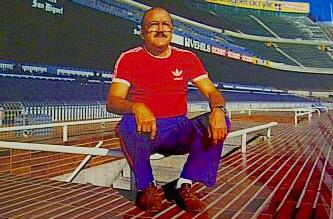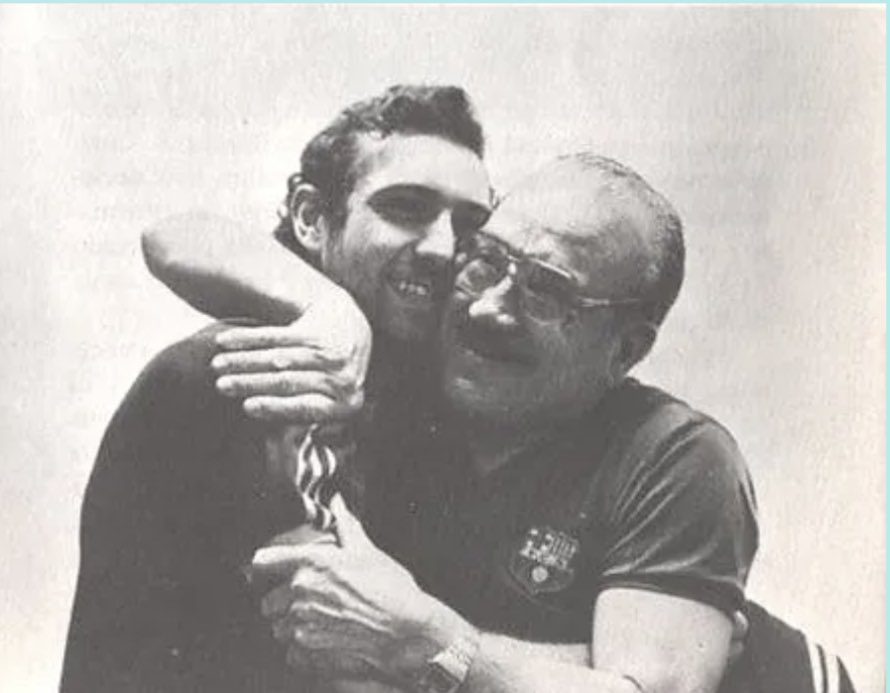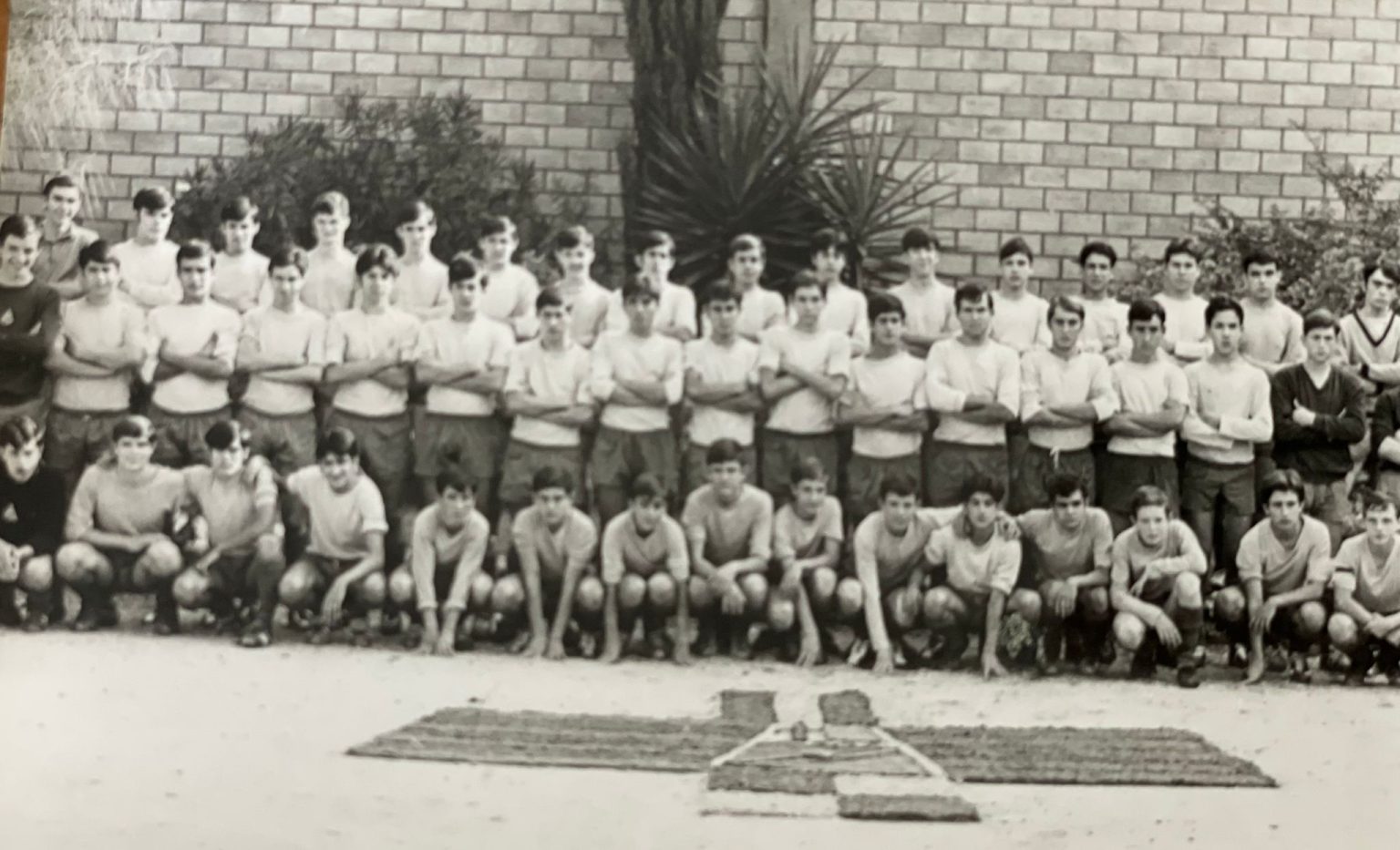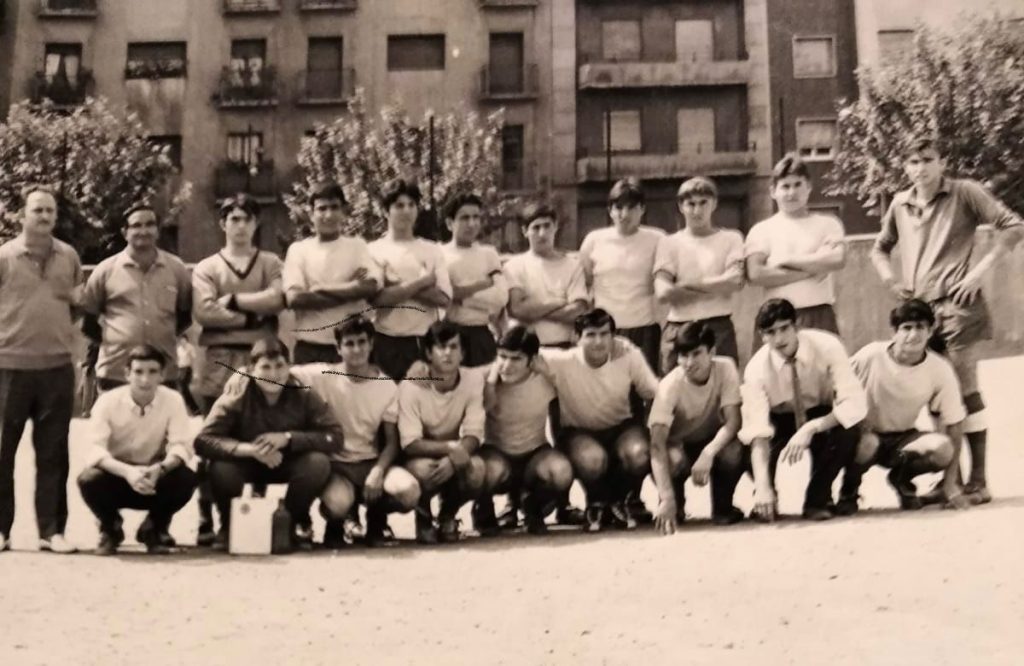The Penya Barcelonista Anguera was founded in 1957 by the endearing head of FC Barcelona’s sports equipment known as “Papi” Anguera, with a clear vocation to promote grassroots football and the development of young footballers’ skills. Currently, it is the official supporters’ club with the number 1 credential. The penya’s teams have had some players who later made a career in professional football, such as Macizo, Navarro, Pérez Contreras, José Cano “Canito” and Joan Verdú. As we all know, there are and have been sports, social and solidarity penyes; we can affirm, without renouncing to social and solidarity aspects, that Penya Anguera is one of the great sports penyes by history and excellence.
The penya’s headquarters are located at 111 Corsega Street in Barcelona, but its teams play and train at the Industrial School and INEFC facilities. The penya is located in the center of Barcelona and enjoys the proximity of monuments and historical places of interest such as the Sagrada Familia, the Sant Antoni Market, La Pedrera, the Industrial School and the School of Labor. Some of the presidents that the penya has had during its history are Domingo Bernat Ruiz, Antonio Estivill, Mr. Gomez, José María Tapies, Eduard Galceran, Ramon Planas, Gabriel Montiel, Lluís Monràs and Joan Bertran. .
Who was Papi Anguera?
Francesc Anguera, better known as “el Papi Anguera”, was born in Barcelona in June 1918 and left us on 22 April 2000. He was a person linked to the Club, always in the background, but much loved by all who knew him.
When the Civil War ended, Francesc Anguera decorated the flats of the time, papering the walls of the neighbourhood where he lived, Poble Sec. He soon joined the Club through the legendary goalkeeper Ramon Llorens, but at first, he was not in charge of equipment (an occupation for which he has gone down in the memory of FC Barcelona fans), but rather he carried out tasks related to the Club’s youth football, under the coordination of Llorens himself. He was also the Club’s delegate; he ordered cards and even became a scout for the different FC Barcelona teams. This is how he discovered, among others, Ferran Olivella, who was also born in Poble Sec.
In 1952, he was offered the position of equipment manager for FC Barcelona’s youth and amateur teams and sometimes went with the first team as assistant to the caretaker Claudio Pellejero. As equipment manager, he witnessed the changes in the world of football, such as the introduction of player substitutions during a match. The nickname ‘Papi’ (Daddy) came from the players Vergés and Calvet, at the end of the 1950s, who probably christened him that way because of the great care he took of all of them.


The introduction of substitutions
It was not until the 1954 World Cup qualifiers that the possibility of changing players in a football match officially appeared; until then, if a player was injured, the team concerned was left with 10 players on the pitch. However, the rule failed in the first place because many officials felt that allowing changes in case of injury could lead to all sorts of tricks and conflicts. Goalkeepers were only allowed to be changed in very specific cases, but in England usually not even this. Finally, it took 11 years for the English to allow it in their regulations, in the 1965/66 season, and it was only a change of player in case of injury.
In the Spanish League, during the 1960s, only substitution of the goalkeeper was allowed if he was injured. Finally, despite the reluctance of the secretary of the Spanish Federation, in 1969 the substitution of an outfield player in case of injury was allowed. The 1970 World Cup in Mexico finally opened the door to substitutions and, following the new FIFA regulations, all championships had to adapt.
Anguera’s relationship with Cruyff
So, from 1970 onwards, “Papi” Anguera had a backlog of work, as instead of preparing 11 kits and the substitute goalkeeper’s kit, he was now obliged to prepare 16 kits for each match. Anguera also witnessed other changes over the years, such as the evolution of travel, which went from being done by coach or train to being done by plane.
During the time that he coincided with Johan Cruyff in the first team, Anguera forged a great relationship with him that would develop to the point that ‘Papi’ became a kind of confidant of the Dutch star. Some legends say that after winning a league match, Johan Cruyff left the changing rooms to a bar and ordered a beer. With the drink in his hand, he returned to the dressing room and offered it to Anguera. The Dutchman knew that FC Barcelona’s beloved equipment manager was in the habit of having a beer after the games.
Since the foundation of the Penya Barcelonista Anguera, and even after his retirement in 1983, “Papi” was always linked to the penya. A relationship that lasted until his death in 2000.







